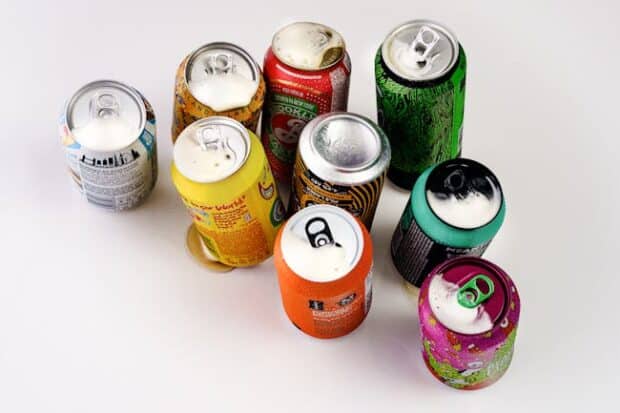A Tufts University study found that at least 10% of the world’s youth consume more than seven servings of sugary drinks weekly.
They also analyzed children’s dietary habits worldwide and found they consumed nearly 23% more sweetened beverages in 2018 than in 1990.
READ: To boost your run, think pink for your drink, says study
Article continues after this advertisementOn August 7, 2024, the researchers published their findings in the British Medical Journal (BMJ).
FEATURED STORIES TECHNOLOGY vivo launches V40 Lite with 5000mAh battery covered by 50-month warranty, starts at Php 13,999 TECHNOLOGY Galaxy Buds3 Pro: Delivering tailored sound wherever you go TECHNOLOGY Very mindful, very intuitive: ASUS’ most superior AI PC yet, the Zenbook S 14, empowers you to achieve more How did they study global sugary drink consumption?Globally, children and adolescents’ consumption of sugary drinks increased by almost a quarter between 1990 and 2018, estimates a new study led by Friedman School researchers. | @bmj_latesthttps://t.co/QVhWxht82D
— Tufts University (@TuftsUniversity) August 8, 2024Laura Lara-Castor, postdoctoral scholar at the University of Washington, led the study with Friedman School of Nutrition Science and Policy researchers.
Tufts University reported they drew from the Global Dietary Database (GDD). It is a massive comprehensive compilation of what people worldwide eat and drink.
Article continues after this advertisementThey studied their sugary drink consumption. Also, they defined “sugar-sweetened beverages” as soda, energy drinks, sports drinks, juice drinks, and home-sweetened fruit drinks with more than 50 kcal per cup.
Article continues after this advertisementThe researchers excluded 100% fruit juices, non-caloric artificially sweetened drinks, and sweetened milk. Also, they narrowed their sample to youth aged three to 19 years old.
Article continues after this advertisementThe researchers discovered that children and teens in 56 countries averaged seven or more servings weekly.
They represented 238 million people or 10% of the global youth population. However, consumption varied by world region.
Article continues after this advertisementFor example, South Asia drank 1.3 servings on average and Latin America consumed 9.1 servings.
The global average was 3.6 weekly servings. Here are the most populous countries with the highest sugary drink consumption:
Mexico (10.1 servings per week) Uganda (6.9) Pakistan (6.4) South Africa (6.2) United States (6.2)Trends from 1990 to 2018 show Sub-Saharan Africa had the largest increase, growing 106% to 2.17 servings weekly.
READ: Our coffee consumption could be influenced by our genes
“Sugary beverages increase weight gain and risk of obesity, so even though kids don’t often develop diabetes or cardiovascular disease when they are young, there could be significant impacts later in life,” Laura Lara-Castor said.
“The intakes and trends we’re seeing pose a significant threat to public health, one we can and must address for the future of a healthier population.”
Sugary drink consumption in the Philippines
 Free stock photo from Pexels
Free stock photo from Pexels
The Department of Science and Technology – Food and Nutrition Research Institute (FNRI) reported that more Filipino adolescents are becoming obese.
It says the number of obese Filipino youths skyrocketed from 11.6% in 2018 to 13% in 2021. Moreover, the United Nations International Children’s Emergency Fund (UNICEF) explains that sugary drinks are one of this issue’s main causes.
UNICEF says more Filipinos are feeding their kids highly processed foods and beverages or “junk food” due to various factors.
Junk food is highly affordable, which makes it highly enticing as the price of basic commodities skyrockets. Parents find it hard to deny their children’s wants. Digital marketing for unhealthy foods often appeals to children. Some companies use “health-washing,” which involves promoting junk food as having natural ingredients or vitamins.UNICEF warns that roughly a third of Filipino teenagers could become overweight or obese by 2030. As a result, more children may grow up to develop the following problems:
Tooth decay Joint pain Skin, liver, and heart problems Increased body weight Mental health issues due to bullying and low self-esteemREAD: ChatGPT can create unique drink recipes
In response, Senator Lito Lapid filed Senate Bill No. 1231 in 2022. Inquirer Newsinfo says it “aims to establish a healthy food and beverage program for all public elementary and secondary schools and learning institutions.”
Subscribe to our daily newsletter
“If we ensure that students have access to food with high nutritional value, we can make sure that their health will improve as well as their performance in schoolking billy casino,” Lapid emphasized in Filipino.
TOPICS: technology READ NEXT Saudi Arabia performs first-ever robotic heart surgery NASA is developing a ‘lunar time standard’ for space explo... EDITORS' PICK Manila Water Foundation and partners underscore benefits of handwashing NBA: Nuggets give Aaron Gordon 4-year, $133M extension Party-list system: What to know ahead of 2025 polls SC issues TRO vs Comelec resolution on dismissed public officials LIVE UPDATES: Tropical Storm Kristine DILG identifies 38 hotspots ahead of 2025 polls MOST READ SC issues TRO vs Comelec resolution on dismissed public officials Tropical Storm Kristine slightly intensifies; Signal No. 2 in 5 areas Walang Pasok: Class suspensions on Wednesday, Oct. 23 LIVE UPDATES: Tropical Storm Kristine View comments
